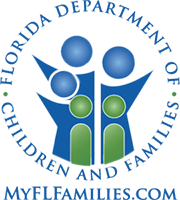The Definition of Problem Drinking
The definition of problem drinking is the consumption of alcohol in a way that negatively affects a person’s life, by causing problems at home, at work, at school, financially, socially, and/or causing physical health problems. A person with a substance use disorder involving alcohol will continue drinking as issues arise, and will be unable to stop, even if they really want to. College students, trauma victims, people with mental health disorders, those genetically predisposed to drinking problems, veterans, and high-stress professionals are more likely to become problem drinkers than others.
Alcohol abuse is the cause of approximately 100,000 deaths per year, and causes people to have legal issues, social problems, and an increase in violence and injury through accidents and risky behaviors. Screening for alcohol use disorders often fails as drinkers may lie about their actual rate of consumption, or otherwise withhold information due to shame or fear. This not only results in misdiagnosis, but also may mask the symptoms of mental health issues or other medical problems during doctors’ visits.
Symptoms of drinking problems include recurrent intoxication and heavy consumption, tremors/shakes, memory loss, blackouts, fatigue, mood swings, and a multitude of physical issues like failing liver health and brain issues. Signs of a drinking problem may include personal neglect and poor nutrition, frequent falls, injuries or accidents, missing school or work frequently, and unexpected interactions with prescription medications.
Alcoholism is a psychiatric disorder that is frequently accompanied by other substance abuse disorders like smoking and drug use, as well as mood disorders, anxiety, depression, and other mental illness. Alcohol addiction is a chronic, life-long disease that can be managed through detox, rehabilitation, and a long-term relapse prevention program, with community support and medical care provided along the way.
Types of Drinking Problems
Types of harmful drinking problems include alcohol abuse, binge drinking (5 drinks in 2 hours for men, or 4 drinks in 2 hours for women), heavy drinking (binging 5 or more days in a month, or drinking more than 14 drinks per week for men, or over 7 drinks per week for women), problem drinking (drinking that causes negative repercussions to your life), and alcohol use disorder or alcoholism (being unable to stop using alcohol).
Although not everybody who drinks has a problem, choosing abstinence or moderation may help prevent developing an addiction. This includes strategies like creating your own boundaries before you decide to drink, taking several days off per week from drinking, choosing to drink less, having smaller drinks, choosing drinks with a lower alcohol percentage, alternating between alcohol and water or other non-alcoholic drinks, or creating a firm budget on which you can spend on alcohol.
At The Source, experts believe that problem drinking is a symptom of underlying pain, trauma, and other issues such as undiagnosed social problems or mental illness, and by treating these underlying issues, long-term recovery can be achieved. Alcoholism is an unhealthy coping mechanism that can be unlearned and treated through programs that include individual and group therapy, behavioral therapy, family therapy, EMDR, neurofeedback, 12-step groups, trauma therapy, rapid resolution therapy, and holistic treatments including meditation and massage therapy. The Source offers partial hospitalization programs, intensive outpatient programs and standard outpatient treatment programs that will provide support, care, and a safe environment in which those addicted to alcohol can express themselves, work through underlying issues, and gain a helpful, supportive, sober community of peers and professionals that will last a lifetime.
It is possible to stop problem drinking and move on with help from the caring staff at The Source treatment center. Whether the patient requires residential care in a partial hospitalization program or part-time outpatient guidance and meetings as they continue working or attending to other responsibilities, there is a program that can be adjusted to best suit any individual’s needs.
How Much Alcohol is Too Much? Problem Drinking Definedhttps://t.co/v29BcmfZkC
— The Source Treatment Center (@SourceTreatment) March 31, 2022

 The Source quite frankly saved my life and got me back on track, never giving giving up on me. When you are thinking about and looking through all of the different places to go for treatment this is the one that should stand out from the rest.
The Source quite frankly saved my life and got me back on track, never giving giving up on me. When you are thinking about and looking through all of the different places to go for treatment this is the one that should stand out from the rest.




























